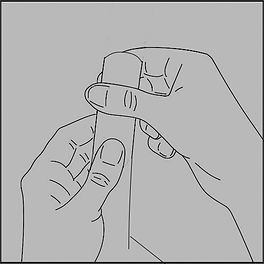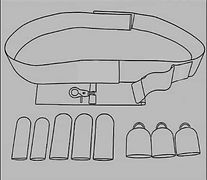I recommend approaching any information about penis enlargement critically. There are many techniques that work in very different ways and vary from completely ineffective to truly efficient. In broad terms, all effective methods fall into three categories:
1. Continuous traction with a device
(extender, stretcher, hanger) – generally effective and the least traumatic.
2. Manual exercises that rely on high internal blood pressure – moderately effective but more injury-prone.
3. Surgery – the most radical and, when successful, the most effective method
• Lengthening (ligamentotomy)
• Girth enhancement (injecting a filler under the shaft skin—autologous fat, hyaluronic acid, or polylactic acid)
3.Below is a closer look at each option, starting with surgery

• Ligamentotomy (lengthening)
The surgeon cuts the suspensory ligament that anchors part of the penile shaft inside the pelvis. Afterwards the freed internal segment is gradually stretched outward—usually with an extender—for 1 – 4 months.
Typical gain: up to 3.5 cm erect (more often +1.5 – 2.5 cm).
-
-Possible side-effects:
-
-Pain during erections — rare
-
-Infection — very rare
-
-Downward erection angle — common
-
-Unsatisfactory gain (+0 – 1 cm) — common
-
-A successful procedure gives a lifetime result.
• Girth enhancement with fillers (fat, hyaluronic or polylactic acid)
A urologic surgeon injects the material evenly under the skin of the shaft. The increase is immediate; typical added circumference is 0.5 – 1.5 cm when erect.
Possible side-effects:
-
Filler migration to one side (baseball bat-like shape when erect)
-
Poor cosmetic appearance at rest (swollen look)
-
Short-lived result — about 70 % of the filler is absorbed within 1 – 2 years
2. Manual exercises based on blood pressure

These methods force extra blood into the shaft and slowly stretch the tunica albuginea under pressure. They can be dynamic (e.g., jelqing) or static, where the base is clamped to trap blood.
Typical gain: +0.5 – 1.5 cm in girth over 4 – 12 months. The effect is permanent.
Possible side-effects:
Invisible overtraining that leads to scarring instead of growth
High risk of vascular injury (varicose veins, thrombosis) — serious and hard to treat
With a cautious, progressive routine, vascular exercises can be a good free way to add girth, ideally combined with continuous traction.
1. Continuous traction with devices
(Extenders, stretchers, hangers)



Continuous penile traction began to be used in medicine around 1995 with the rod-type extender: a device that grips the glans with a strap/noose and applies traction via metal rods braced against the pubic area.
Originally, extenders were prescribed for post-ligamentotomy rehabilitation, drawing on the Ilizarov apparatus methodology (USSR, 1971) and the concept of mechanotransduction.
Because rigid rods restricted movement, springs were later added—turning the extender into a tensioning device rather than a purely rigid distraction frame.
In practice, extenders proved capable of lengthening the penis even without surgery (no other traction devices existed at the time), but usage was limited by several design issues:
1. Bulky and conspicuous. Effective traction requires long wear times (4–6 hours/day). The extender is large and can be visible under clothing, attracting unwanted attention.
2. Pain at the base ring. The support ring presses on the proximal shaft; the pressure point becomes painful, forcing frequent readjustments.
3. Glans compression. The noose/strap that holds the glans can impede blood flow; the area under the loop becomes notably painful, and many men cannot tolerate prolonged wear.
For more than a decade, the rod-type extender was the main method of long-term penile traction—for postoperative rehabilitation and as a standalone “trainer.”
More recently, alternatives based on elastic tension have appeared: the so-called stretchers, which use an elastic band instead of springs. This approach improves discreet wear and eliminates the base-ring pain typical of classic extenders.
If we summarize the three approaches for a man considering size change:
3) Surgery — expensive; no 100% guarantee of length gain; girth increase provides a 100% immediate result, but failed procedures can have consequences.
2) Manual exercises — injury-prone; proper technique is essential; mainly target girth and look more “natural.” Hard to achieve results, but free.
1) Long-term traction — using a stretcher if painless, discreet wear is needed. Compared with surgery, it’s less expensive and low-trauma. Results are achievable with many hours over months of consistent wear.
At present, there are no hormones, pills, or dietary supplements that effectively enlarge the penis. Only the three options above are viable.
Each method can be used in specific situations and does not exclude the others. If there is a confirmed diagnosis of micropenis (which is very rare), surgery may make sense. Statistically, however, about 90% of men dissatisfied with their size fall within the normal range, and their concerns are largely psychological. Even so, understanding that there’s no pathology usually doesn’t change the desire to enlarge. In practice, most men prefer to “take action” rather than work through those concerns. In that case, the most proven option with the fewest consequences is long-term traction—and as a traction device, it’s better to use a modern stretcher to avoid the two key problems of classic extenders:
1. Pain while wearing
2. Visibility under clothing
The A-Ext stretcher is a comfortable, carefully engineered device that can be worn for many hours daily, completely discreetly under clothing, to achieve length gains (~1 to 2.5 cm in about 4 months)—without discomfort or pain. In practice, A-Ext is more effective than a classic extender because it’s easier to wear consistently, so most users stick to the plan and don’t drop the course.
A-Ext is a tool—and like any tool, it must be used properly and, for best results, combined with targeted exercises.
On this site you can review the training program, study the theory, and get practical, step-by-step guidance on traction and exercises — free of charge.